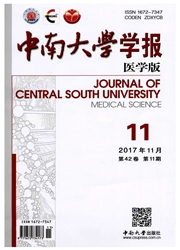

 中文摘要:
中文摘要:
目的:建立HSF1^-/-,HSF1^+/+两种基因型小鼠胚胎成纤维永生化细胞系,为HSF1的功能研究提供实验模型。方法:用脂质体介导的基因转染法将pSV3neo质粒导入HSF1^-/-,HSF1^+/+两种基因型小鼠胚胎成纤维细胞,经G418筛选,抗性克隆扩大培养,建立永生化细胞系;用PCR检测两种细胞株中目的基因的整合,用RT—PCR法鉴定SV40T基因在转染细胞中的表达;用Western blot检测所建细胞株的诱导型热休克蛋白70的表达情况。结果:有3个细胞克隆已扩大培养稳定传代达6个月,经鉴定SV40T抗原已整合到两种细胞中且稳定表达,HSF1^-/-胚胎成纤维细胞热休克蛋白70的诱导表达消失。结论:成功建立永生化HSF1^-/-,HSF1^+/+两种基因型小鼠胚胎成纤维细胞。
 英文摘要:
英文摘要:
Objective To establish immortalized embryonic fibroblast lines in heat shock transcription factor 1 ( HSF1 ) HSF1^ -/- and HSF1^+/+ mice and to provide experimental models to study the function of HSF 1. Methods A mammalian expression vector ( pSV3 neo ) containing the SV40 large T antigen was used to transfect the HSF1^-/- and HSF1^+/+ mouse embryonic fibroblast using LipofectamineTM 2000. Colonies were screened by G418 and expanded to immortalized cell lines. PCR was used to detect the integration of the large T antigen with genome in the mouse embryonic fibroblast. Expression of SV40 large T antigen gene in expanded cells was identified by RT-PCR. HSP70 expression was examined by Western blot in the embryonic fibroblast lines. Results The stable growth and serial propagation were observed in the HSF1^-/- and HSF1^+/+ cell lines for six months. The mRNA of SV40 T antigen gene expressed in the two cell lines. HSP70 expression could not be induced in the heat-treated HSF1^-/- mouse embryo fibroblasts. Conclusion The immortalized cells of HSF1^+/+ and HSF1^-/- mouse embryo fibroblasts are successfully established.
 同期刊论文项目
同期刊论文项目
 同项目期刊论文
同项目期刊论文
 期刊信息
期刊信息
